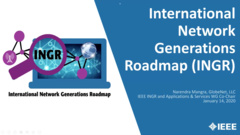Although 5G is changing the mobile communications game, there is one gap that need to be surpassed, which is the connectivity in remote areas. This application scenario has important social and economic impacts and 5G should be able to address its requirements in the near future. Billions of people live in uncovered or underserved areas, unable to enjoy the benefits of the Digital Era. A reliable and cost accessible 5G for Remote Areas Network would offer the opportunity for these people to be included in the digital world, opening new markets for operators and new opportunities for vendors. Also, agribusiness is demanding higher efficiency from the fields and the ability to collect data and remotely control the machinery and systems (such as watering) is essential for improving productivity in farms. The aim of this webinar is to discuss the possibilities for 5G to support and address the remote area networks requirements and to present the major technologies that can help in this challenging task.
Although 5G is changing the mobile communications game, there is one gap that need to be surpassed, which is the connectivity in remote areas. This application scenario has important social and economic impacts and 5G should be able to address its requirements in the near future. Billions of people live in uncovered or underserved areas, unable to enjoy the benefits of the Digital Era. A reliable and cost accessible 5G for Remote Areas Network would offer the opportunity for these people to be included in the digital world, opening new markets for operators and new opportunities for vendors. Also, agribusiness is demanding higher efficiency from the fields and the ability to collect data and remotely control the machinery and systems (such as watering) is essential for improving productivity in farms. The aim of this webinar is to discuss the possibilities for 5G to support and address the remote area networks requirements and to present the major technologies that can help in this challenging task.
 Cart
Cart Create Account
Create Account Sign In
Sign In





